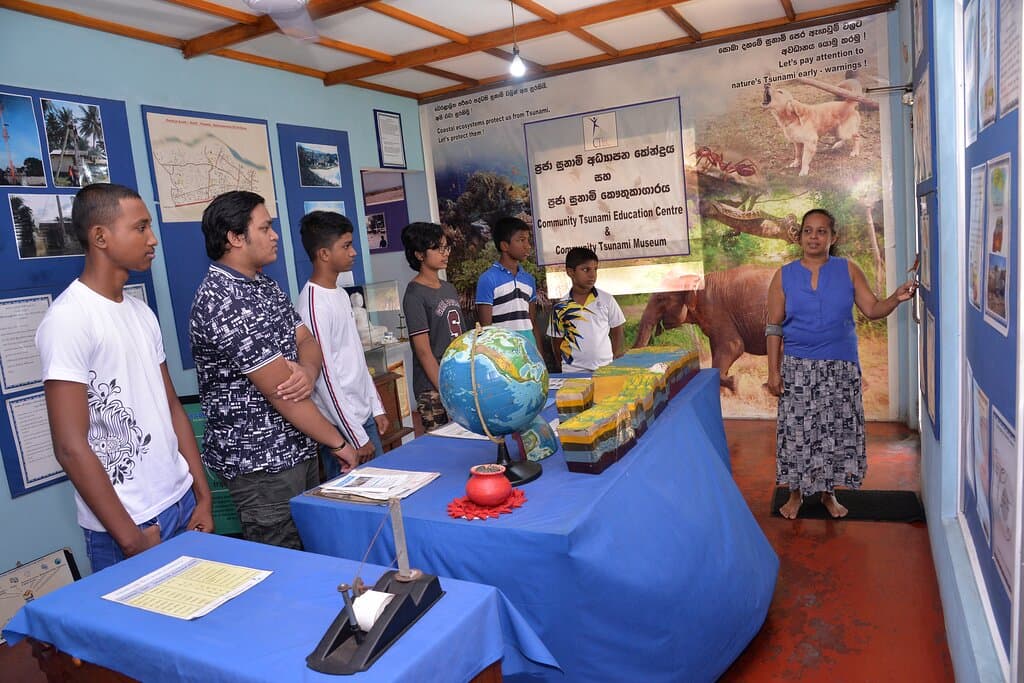
Community Tsunami Museum
A solemn tribute to the 2004 tsunami, showcasing its impact and the community's inspiring resilience through powerful exhibits and personal stories.
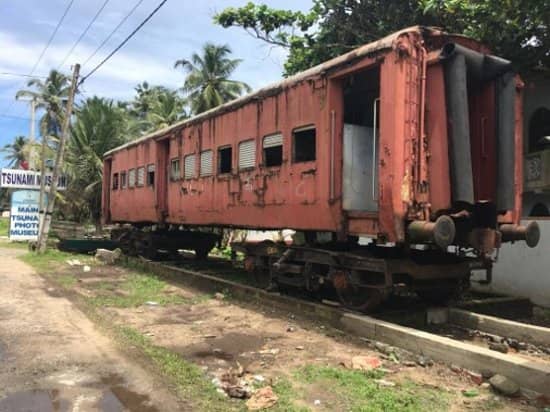
Highlights
Must-see attractions
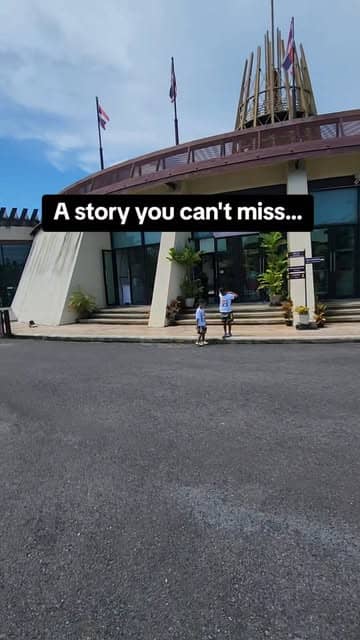
Social
From TikTok & Reddit
Best Time
Fewer crowds, more reflection

Community Tsunami Museum
Best Time
Fewer crowds, more reflection

Highlights
Must-see attractions
A solemn tribute to the 2004 tsunami, showcasing its impact and the community's inspiring resilience through powerful exhibits and personal stories.
"Truly moving experience well worth going. A strong reminder on where this island nation were back in 2004 after the disaster."
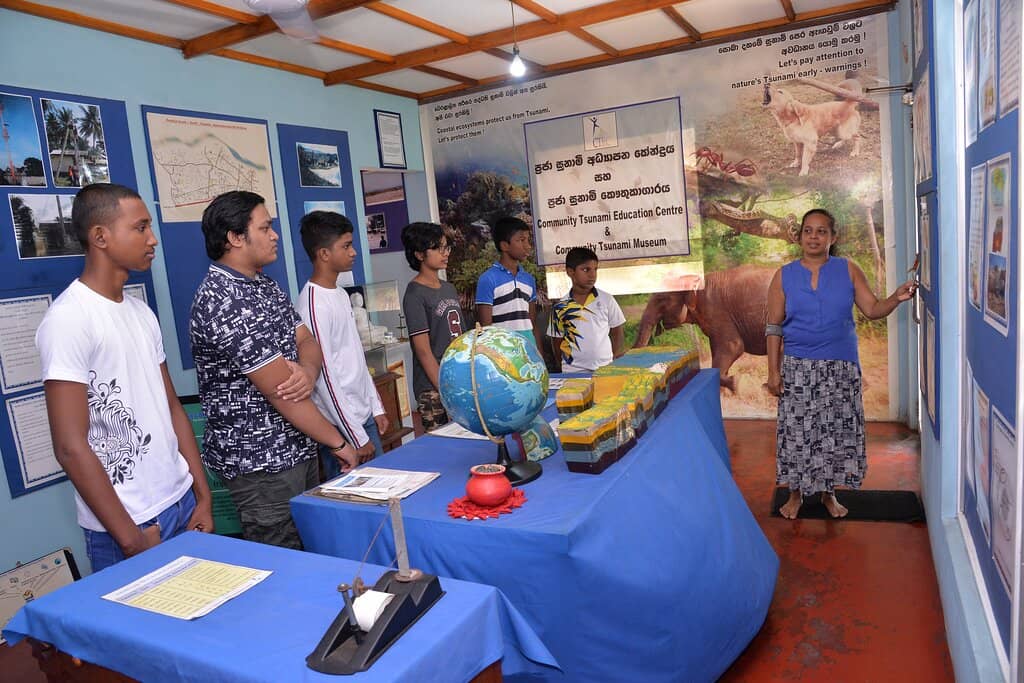
Be Prepared for Graphic Content
Some photos are very graphic, showing the harsh reality of the disaster. Approach with sensitivity. :warning:
Donations Welcome
Entry is free, but donations are highly encouraged to support the museum's mission. :heart:
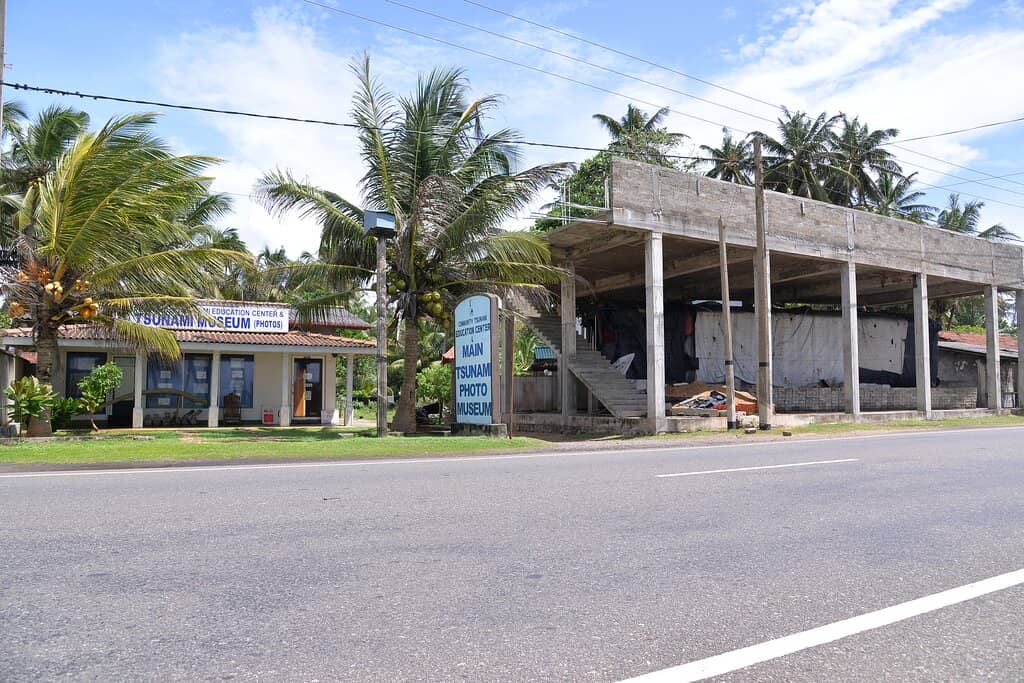
Highlights
Discover the most iconic attractions and experiences
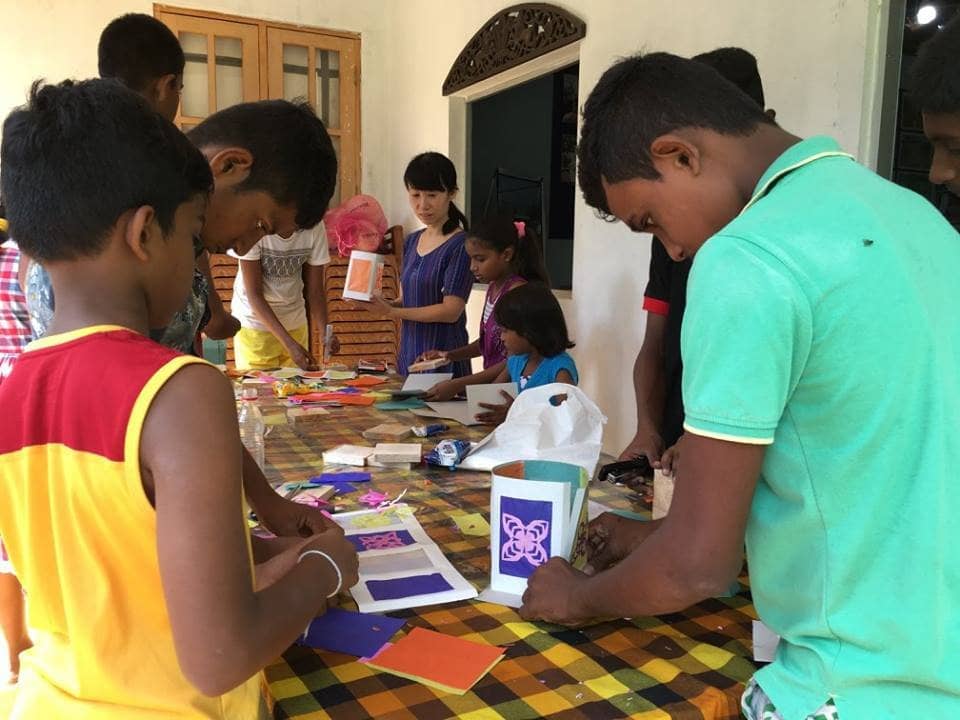
Tsunami-Damaged Train Carriage
Main Exhibit Hall
The sole remaining train unit, a tangible and emotional testament to the tsunami's immense power.
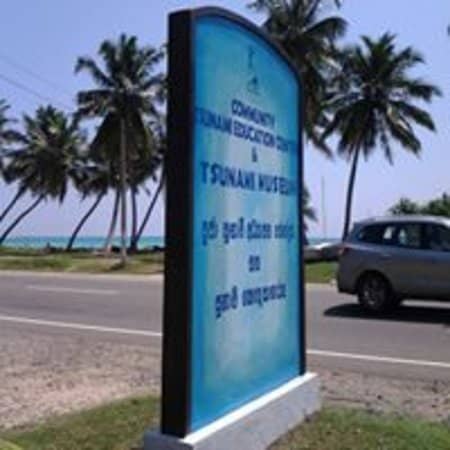
Graphic Aftermath Photos
Exhibition Walls
Hundreds of powerful images documenting the disaster's immediate impact and recovery efforts.
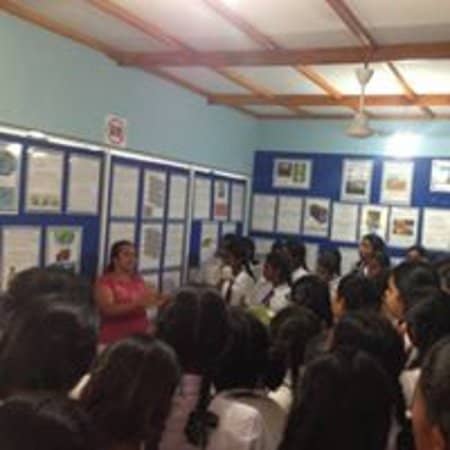
Personal Survivor Stories
Throughout the Museum
Moving accounts from staff and locals sharing their experiences of the tsunami and rebuilding.
Plans like a pro.
Thinks like you
Planning Your Visit
Respectful Visit is Key
Understand the Impact
Best Times
Insider Tips
from TikTok, Instagram & Reddit
Be Prepared for Graphic Content
Some photos are very graphic, showing the harsh reality of the disaster. Approach with sensitivity. :warning:
Donations Welcome
Entry is free, but donations are highly encouraged to support the museum's mission. :heart:
Allow Ample Time
Plan for at least an hour to fully absorb the exhibits and personal stories. :clock:
Engage with Staff
The knowledgeable staff share personal experiences, offering invaluable insights. :speech_balloon:
Tips
from all over the internet
Be Prepared for Graphic Content
Some photos are very graphic, showing the harsh reality of the disaster. Approach with sensitivity. :warning:
Donations Welcome
Entry is free, but donations are highly encouraged to support the museum's mission. :heart:
Allow Ample Time
Plan for at least an hour to fully absorb the exhibits and personal stories. :clock:
Engage with Staff
The knowledgeable staff share personal experiences, offering invaluable insights. :speech_balloon:
What Travellers Say
Reviews Summary
Visitors consistently describe the Community Tsunami Museum as a deeply moving and educational experience, offering a powerful look at the 2004 tsunami's impact and the community's remarkable resilience. While some exhibits are graphic, the personal stories and the preserved train carriage leave a lasting impression, making it a highly recommended visit for those seeking to understand the event and honor its victims.
"Truly moving experience well worth going . not to be confused with the other Tsunami photo shops which are free .
Three rooms plus the train carriage which walks you through the terrible events of 2006 .
No photos can be taken only of the train , there is one wall behind curtains which shows the full story of the Tsunami.
Truly remarkable and moving experience to be respected."
Gary Palmer
"Just walking in brought back those memories and tears along with it. You do get very good educational details on earthquake and Tsunami as well as a strong reminder on where this island nation were back in 2004 after the disaster. seen the train compartment really hit hard. 100% a recommended visit"
Jason Bastiansz
"The Community Tsunami Education Center & Museum is a place that deeply connects you to one of the most devastating natural disasters in recent history. This center has carefully preserved a train compartment that was destroyed by the tsunami waves, giving visitors a tangible and emotional look at the scale of destruction. It’s the only remaining train unit on display, and the visible damages tell a powerful story of what happened on that tragic day.
What makes this place truly valuable is the team of knowledgeable individuals who passionately explain the events of the tsunami. They take you step by step through how the disaster occurred, its root causes, and how it affected the surrounding area and suburbs. The museum also features a vast collection of photos documenting the entire timeline—showing the disaster’s immediate aftermath, the discovery of victims, and the extraordinary response from local communities and international support teams.
Through their detailed explanations, you’ll gain insights into how unrecognized bodies were handled with care, the resilience of people in rebuilding their lives, and the recovery efforts that led to the development and reconstruction of the area. The stories are shared in stages, helping visitors truly understand the scale of loss and the strength of the human spirit that followed.
This is a must-visit place for those who want to learn, reflect, and pay their respects to the victims while appreciating the community’s courage and determination to recover. If you’re in the area, make it a point to stop by and experience this educational and thought-provoking center. It’s not just a museum—it’s a living tribute to history and humanity."
Thusith perera
What People Like
What People Dislike
Frequently Asked Questions
🚇 🗺️ Getting There
The museum is located in Ban Nam Khem, Khao Lak. Many visitors arrive by taxi or private car from Khao Lak town. Some local tours may include a stop here.
It's generally well-signposted in Ban Nam Khem. If you're driving, use GPS coordinates for Ban Nam Khem Tsunami Museum.
The museum is typically open daily from 9:00 AM to 5:00 PM. It's always a good idea to confirm hours locally if possible.
Yes, there is usually parking available near the museum, especially if you arrive by private vehicle.
You can arrange a taxi or tuk-tuk from Khao Lak. Some tour operators also include this as a stop on their itineraries.
🎫 🎫 Tickets & Entry
Entry to the museum is free. However, donations are gratefully accepted to help maintain the exhibits and support their educational mission.
No, advance booking is not required as entry is free. You can visit anytime during opening hours.
As entry is free, there are no specific discounts. However, group visits can be arranged by contacting the museum directly.
Photography is generally not allowed for most exhibits, especially the graphic ones, to maintain respect. However, photos of the train carriage might be permitted.
Information on accessibility can be limited. It's best to contact the museum directly to inquire about specific facilities.
🎫 🧭 Onsite Experience
You'll find hundreds of photos, informative videos, personal accounts from survivors, and the impactful, tsunami-damaged train carriage.
Most visitors spend around 1 to 1.5 hours to fully absorb the exhibits and hear the stories.
While not formal tours, the staff are very knowledgeable and often share personal experiences and explanations, making it a very guided experience.
Due to the graphic nature of some exhibits, it may not be suitable for very young children. Parental discretion is advised.
It's a deeply moving and sobering experience, evoking strong emotions as you learn about the tragedy and resilience.
🍽️ 🍽️ Food & Dining
There are no food or dining facilities within the museum itself. You'll find local eateries in Ban Nam Khem village.
Ban Nam Khem village offers local Thai restaurants and street food stalls where you can find affordable meals.
It's best to consume food and drinks outside the museum to maintain the solemn atmosphere.
📸 📸 Photography
Photography is generally restricted for most exhibits to maintain respect and privacy. Check for specific signage.
The exterior of the museum and the preserved train carriage might offer some photo opportunities, but always be mindful of the sensitive nature of the site.
Always ask permission before taking photos of people, and be respectful of the exhibits and other visitors.
For Different Travelers
Tailored advice for your travel style
👨👩👧 Families with Kids
If you do visit with children, use it as an opportunity to discuss resilience and community support. The staff's personal stories can be adapted to convey messages of strength and hope. It's a chance to teach about natural disasters and the importance of helping others in times of need.
🤔 Reflective Travelers
Take your time to absorb the information and allow yourself to feel the emotions the exhibits evoke. This is a place for contemplation, remembrance, and appreciation of the human spirit's capacity for recovery. The free entry and donation-based model make it accessible for all who wish to pay their respects.
Deep Dives
In-depth insights and expert knowledge
The Significance of the Train Carriage
This carriage is the only remaining unit of its kind on display, making it a unique historical relic. Its twisted metal and debris-laden interior tell a silent but potent story of the chaos and devastation that struck the region. The museum staff often use it as a focal point to explain the tsunami's mechanics and its direct impact on the local infrastructure and lives.
Experiencing this exhibit is often described as a gut-wrenching yet essential part of understanding the tsunami's impact. It serves as a stark reminder of the fragility of life and the overwhelming power of nature, while also highlighting the community's determination to rebuild from such devastation.
Understanding the Tsunami Through Exhibits
A significant portion of the museum is dedicated to photographic documentation. Hundreds of images capture the immediate aftermath, the search for victims, and the extensive recovery and reconstruction efforts. These visuals, though sometimes graphic, are vital for comprehending the full scope of the disaster and the resilience of the human spirit.
Beyond the visual and factual information, the museum emphasizes the human element. Staff members, many of whom are survivors themselves, share their personal stories and experiences. This direct connection to lived realities makes the history incredibly relatable and emotionally resonant, fostering empathy and respect for the victims and survivors.
Community Resilience and Rebuilding
Visitors learn about the challenges faced during the recovery process, including the handling of unrecognized victims and the immense task of restoring normalcy. The museum showcases how local communities, with international support, came together to overcome these obstacles, demonstrating remarkable determination and unity.
The narrative woven throughout the museum focuses on hope and the enduring human spirit. It’s a powerful reminder that even in the face of unimaginable loss, communities can find the strength to heal, rebuild, and move forward, creating a living tribute to their courage.
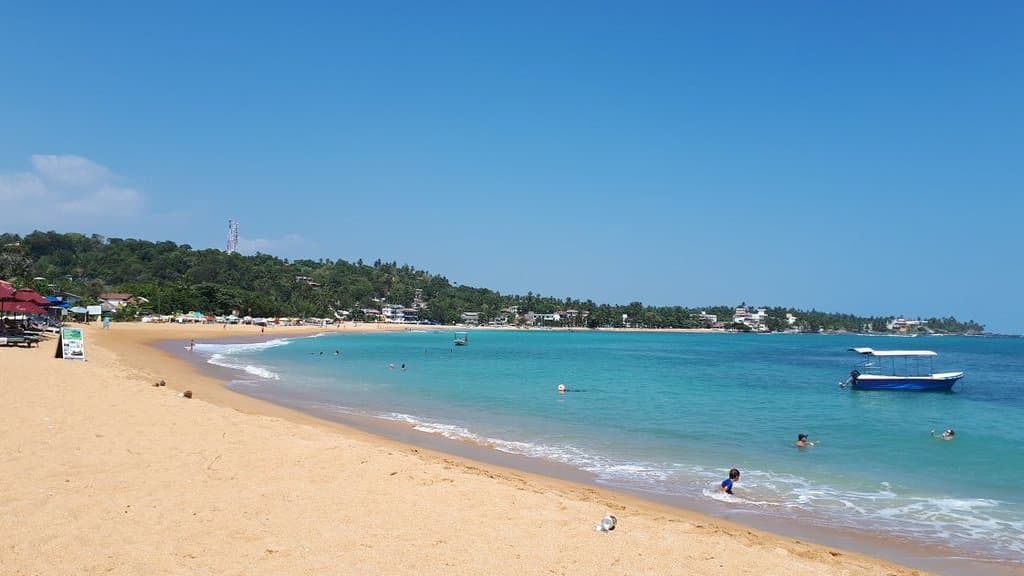

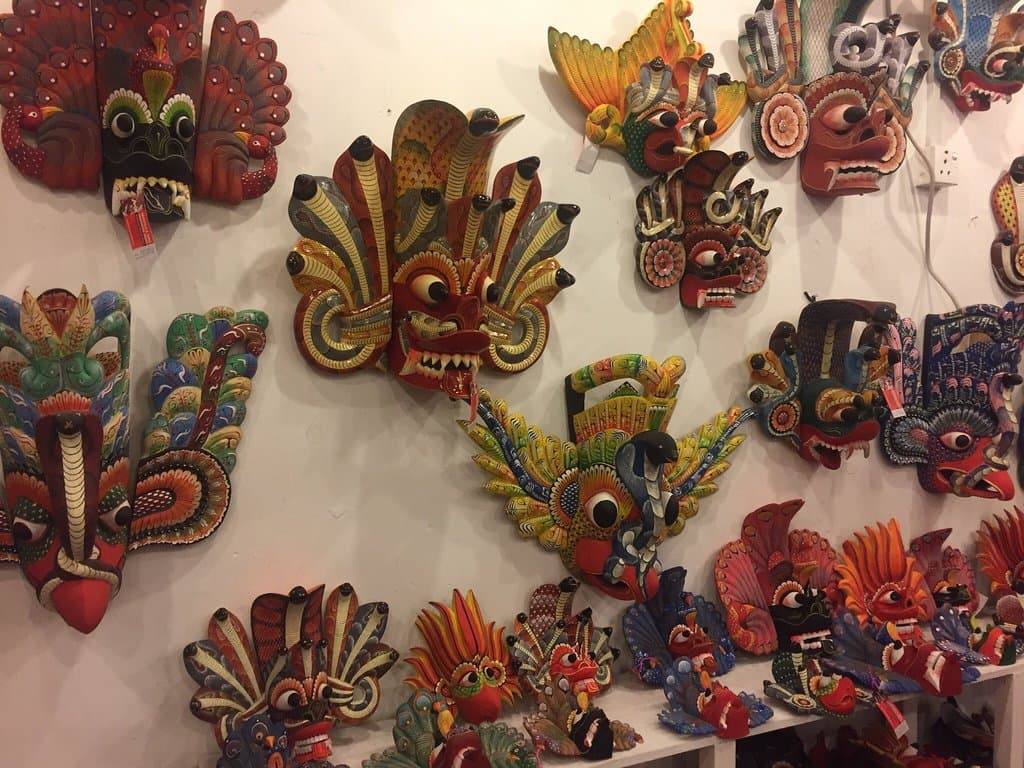

Social
from TikTok, Instagram & Reddit